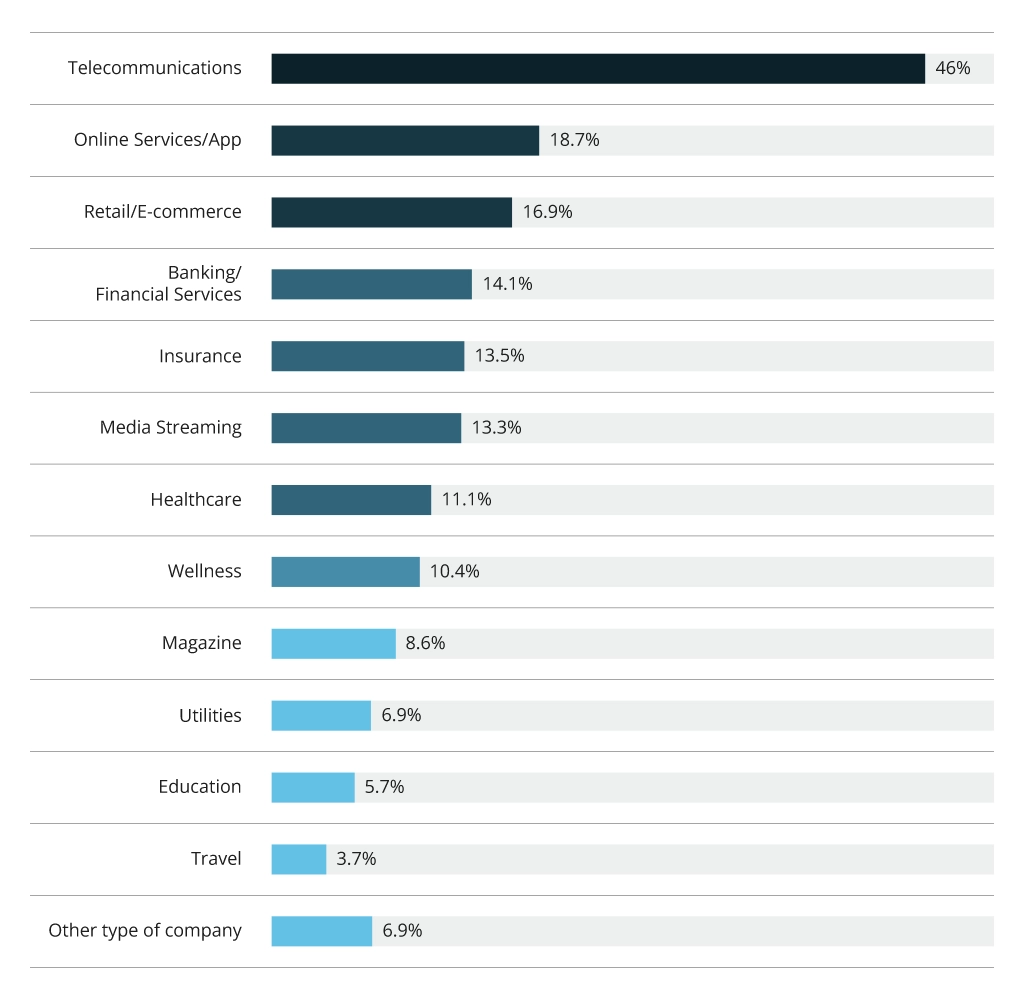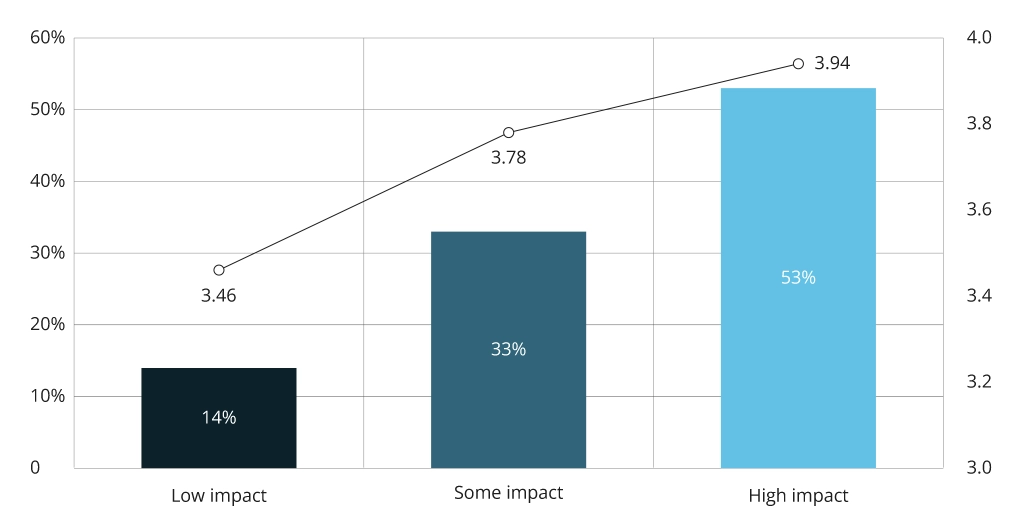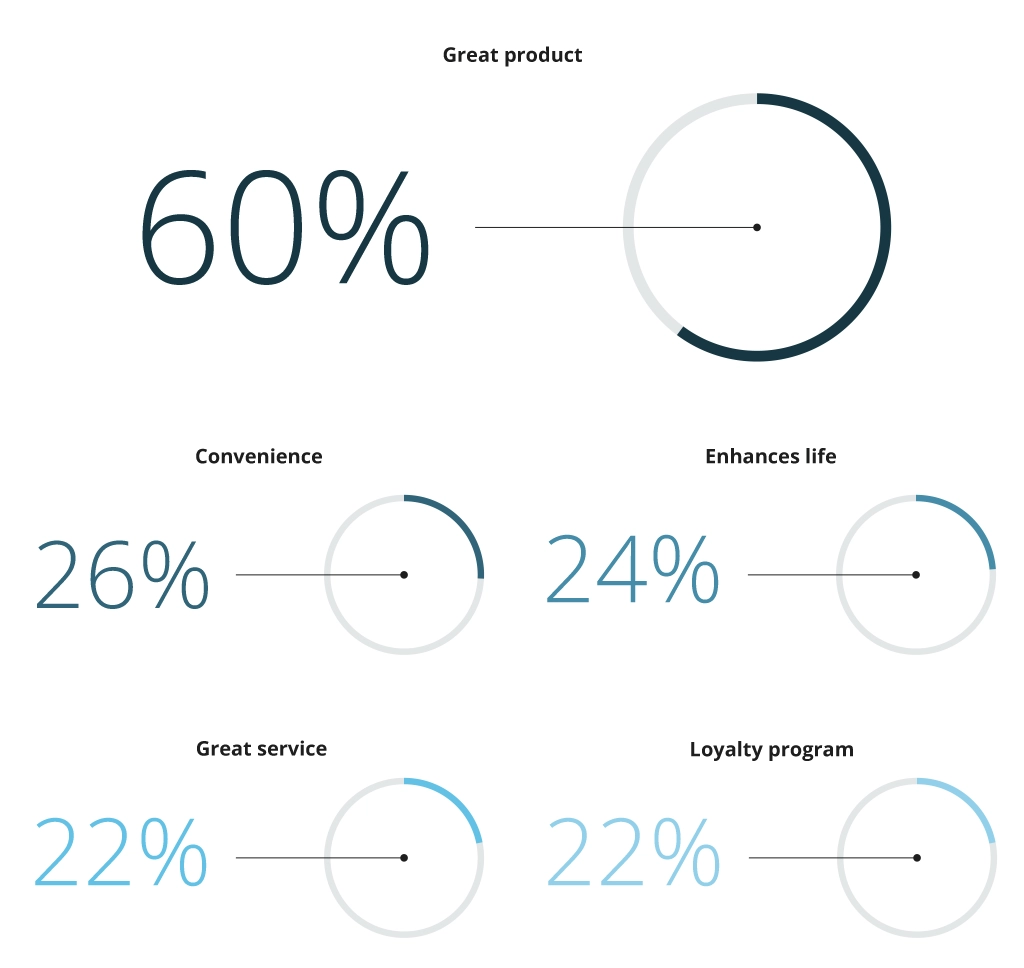How to Reduce Churn in Telecom: 6 Practical Strategies for Telco Managers
Unlike many other industries, telecom services are essential for the quality of customers’ daily life and are always under users’ scrutiny. Dropped calls or slow internet can quickly turn a happy subscriber into the one who leaves. To keep subscribers in the network and build a group of loyal customers, telco managers need effective strategies.
Understanding the Impact of Churn for Telecom Providers
Churn occurs when subscribers discontinue their service, often due to factors like service quality concerns, more attractive competitor offerings, or a perceived lack of value. In the telecom industry, where revenue hinges on recurring subscriptions, churn directly translates to lost income and additional expenses. Industry reports estimate customer acquisition costs can be five times higher than retention costs. Therefore, reducing churn is not just about maintaining subscriber numbers, but about optimizing profitability.
The telecommunications sector faces unique churn drivers. For instance, the pressure to maintain a large subscriber base can lead to aggressive marketing tactics that prioritize short-term gains over fostering long-term loyalty. This, coupled with a lack of differentiation in core services between providers, makes customer experience the key battleground for loyalty in telecom. Here's why it matters: nearly half of customers switch providers due to bad service. This aligns with the broader trend, where 80% of customers believe that the customer experience (CX) a company offers is as crucial as the products and services they sell.
Key drivers of telecom churn are:
- Service issues. Poor network quality, frequent outages, and slow data speeds are the leading causes of churn.
- Customer dissatisfaction. Unresolved complaints, inadequate customer service, and billing issues significantly contribute to churn.
- Competitive landscape. Compelling offers, discounts, and innovative service bundles from competitors can entice customers to switch providers.
- Cost concerns. High subscription fees and hidden charges can push cost-conscious customers to seek more affordable alternatives.
The good news is that churn is not an invincible foe. In the next section of this article, we'll explore practical strategies to combat churn.
6 Strategies for Reducing Churn in Telecom
While acquiring new subscribers is undeniably important, the true engine of long-term success lies in retaining your existing customer base. Losing current subscribers is not only expensive, but also disrupts your overall ecosystem. However, by focusing on customer needs and building loyalty, you can slash churn and cultivate a thriving community of brand advocates. This section dives into powerful strategies to transform your customer base – from potential churners to loyal fans.
1. Understand Your Customers
Engage in Customer Journeys
Map out the entire customer journey to identify key touchpoints and potential pain points. This way you can forecast where customers might face challenges or become dissatisfied. For example, if users frequently experience difficulties during the onboarding process, streamlining it can lead to higher satisfaction and, subsequently, lower churn rates. Companies that effectively organize and manage customer experience can achieve a 20% improvement in customer satisfaction, a 15% increase in sales conversion, a 30 percent lower cost-to-serve, and a 30% increase in employee engagement.
Introduce Customer Segmentation
Segment your customer base by demographics, usage patterns, and spending behavior. Tailoring strategies to each segment can once again improve customer satisfaction and foster brand loyalty. High-value customers, for instance, could receive premium support and exclusive offers. Moreover, research shows a clear connection between personalization and profitability: 64% of respondents said they are willing to spend more on a brand that remembers them and offers a personalized experience. By segmenting your base, you can personalize your marketing efforts, which can cut customer acquisition costs by up to 50%, boost revenues by 5-15%, and enhance marketing ROI by 10-30%.
Use Data Analytics
Leverage data analytics to gain insights into customer behavior and preferences. Analyzing usage patterns, call data, and service interactions can help identify trends and opportunities for personalized offerings. For instance, if data shows a segment of customers frequently exceeding their data limits, offering them a customized data plan can make them happier and keep them from leaving.
Measure Customer Experience Index (CEI)
By prioritizing and improving their CEI, companies can gain deeper insights into customer preferences and pain points. The CEI measures overall customer experience, incorporating factors like customer satisfaction (CSAT), Net Promoter Score (NPS), and Customer Effort Score (CES). Interestingly, 23% of CX leaders have singled out NPS as the top metric they will focus on in 2024.
Conduct Other Surveys and Collect Feedback
Regular surveys provide insights into customer preferences and areas needing improvement. Short, focused surveys at various touchpoints capture real-time feedback, helping to refine strategies. For instance, reviewing contracts and invoices regularly ensures clarity and up-to-date information, creating a solid foundation for developing customer-brand relationship.
Use Predictive Analytics and AI
Predictive analytics and AI in telecom can forecast future customer behavior and trends. These technologies identify customers at risk of churning by analyzing historical data and patterns. For example, if a customer's usage decreases significantly or complaints increase, targeted retention efforts such as personalized offers can influence their decision.
2. Enhance Customer Experience
Improve Customer Service
High-quality customer service is a must-have for retention. Train representatives to resolve issues efficiently and consider offering 24/7 support. Advanced technologies like chatbots and AI-powered systems can provide immediate assistance, reducing wait times and improving overall satisfaction. In turn, keeping customers pleased has a big effect on making changes and improvements, propelling your business forward.
Case in point. For a global connectivity provider, Infopulse established a robust Network Operations Center (NOC) and implemented tiered support that ensured agile service delivery and enhanced customer satisfaction. This solution facilitated scalable growth, improved network performance, and enabled our client's transformation from a startup into a mature, service-focused business.
Streamline Customer Interactions
Make it easy for customers to understand and use your services. Simplify onboarding, billing, and service changes, while paying extra attention to clear contracts and transparent billing practices. This reduces confusion, builds trust, and prevents "first bill shock" through upfront communication and educational materials.
Offer Self-Service Options
Empower customers with robust self-service options through online portals or mobile apps. Self-service options, including FAQs, video tutorials, and automated support tools, improve satisfaction by giving customers control and reducing the burden on customer service teams.
Case in point. The Cloud Connect Portal, developed by Infopulse, revolutionized BICS' leased line services by automating complex processes. The portal's intuitive interface facilitates order requests and eliminates redundant communications by providing direct access to customers. This solution also reduced the quote-to-bill time from days to just one minute, which resulted in optimized resources and improved customer experience. Moreover, by offering a white-label version of the portal for other telecom companies, BICS created new revenue streams.
Provide Value-Added Services
Deliver value-added services such as premium content, exclusive offers, and special events access. These services differentiate your brand and provide additional reasons for customers to stay.
Implement a Customer-Centric Culture
Adopt a customer-centric culture across your organization. Prioritize customer satisfaction in all decisions and actions, listen to feedback, and continuously improve services based on customer needs.
3. Offer Competitive Pricing and Packages
Flexible Pricing Plans
Offer flexible pricing options that cater to different customers’ needs and preferences. Consumers are less likely to switch to a competitor when they can tailor their plans based on how they use the services and what they like.
Loyalty Programs
Implement loyalty programs that reward long-term customers with discounts, free services, or exclusive access to new features. These programs make customers feel valued and appreciated, increasing their likelihood of staying – 79% of consumers say they're more likely to do business with a company that has one.
Bundled Services & Family/Group Plans
Offer attractive bundles that combine multiple services like mobile, internet, and TV at a discounted rate — this simplifies billing and service management for both you and your customers. This convenience extends to family and group plans, where discounted rates for multiple lines or accounts encourage user consolidation under one account. As a result, it can reduce customer turnover, as switching providers becomes less attractive and involves a lot more effort.
Regular Plan Reviews
Regularly review and adjust your pricing plans to stay competitive. Use customer feedback, usage data, and competitor analysis to ensure your offerings remain attractive and relevant. This iterative process helps to identify market trends, opportunities for innovation and adapt your pricing strategy to meet customer needs.
4. Implement Proactive Retention Strategies
Early Warning Systems
Utilize data and predictive analytics to identify customers exhibiting behaviors that signal potential churn. This could include decreased usage, missed payments, increased service inquiries, or social media sentiment analysis. Reaching out to these at-risk customers and addressing their concerns before they escalate can improve your chances of retaining them.
Regular Check-Ins
A significant portion of your revenue likely comes from a select group of customers. These high-value subscribers deserve your dedicated attention to ensure their further loyalty. So, schedule regular check-ins with such customers to address issues before they even think about changing their provider. The check-ins can be conducted through personalized phone calls, surveys, or dedicated account managers.
Win-Back Campaigns
Develop win-back campaigns to re-engage customers who have left. The first step is to analyze churn reasons. Once you understand the "why" behind churn, develop targeted incentives to address it. This could include exclusive discounts, personalized offers, or service upgrades.
Omnichannel Strategy
Use various communication channels to reach customers wherever they are most comfortable. Being available on multiple platforms improves accessibility and shows that you are willing to meet customers on their terms. As per McKinsey, approximately 75% of customers state they utilize various channels to interact with a brand.
5. Invest in Technology and Innovation
Maintain Network Quality
Invest in the newest technologies to offer consistent and quick service. Since 60% of consumers give product quality and convenience top priority over other criteria, high network quality guarantees customer happiness and helps to lower turnover.
Case in point. Infopulse collaborated with a leading global telecom connectivity provider to optimize their roaming and interconnect solutions. The focus was on enhancing customer experience through streamlined system upgrades, installation, and customized setup. Through proactive OSS/BSS engineering, application maintenance, and robust network operations support, Infopulse managed to stabilize service performance and reduce operational costs.
Offer New Services and Features
Regularly introduce new services and features to keep offerings fresh and competitive. Innovations such as 5G, IoT, and AI can attract and retain customers. Globally, 5G coverage is set to comprise 60% of all mobile subscriptions in 2029, meaning today is the best time to invest in its development to become one of the first in the market.
Alongside network expansion, invest in technologies that improve customer experience, such as advanced CRM systems and AI-driven support tools. These enhancements improve satisfaction and make services more user-friendly. 78% of consumers already expect AI to assist them in summarizing their questions or issues, thus helping agents resolve them faster.
Consider eSIM Influence on Churn
By 2030, it's expected that 82% of smartphones will support eSIM technology. eSIM offers several advantages over traditional physical SIM cards, such as easier activation and simpler network switching for users. Adopt eSIM technology to provide greater flexibility and convenience, allowing users to add a number, switch plans, or simply add connectivity to a new smart devices (like smartwatch or tablet) without needing a physical SIM card. The easier the process, the more likely the user will stick with the current provider.
6. Ensure Data Privacy and Security
Protect Customer Data
Data privacy concerns are intensifying, with 79% of customers becoming more protective of their personal information. This heightened awareness is justified, as 56% of CX leaders reported experiencing data breaches or cyber-attacks targeting customer data in 2023. To distinguish yourself from competitors, emphasize your commitment to data security as a critical differentiator. Of course, you need to be true to your word and implement strong encryption protocols to safeguard customer data.
Another way to strengthen your data security posture is to invest in AI and ML. These technologies enable real-time threat detection and response, which minimizes the risk of breaches. In 2022, businesses leveraging AI-driven security solutions reported faster response time to data breaches, which shows their effectiveness.
Ensure Compliance with Data Protection Regulations
Follow data protection regulations like GDPR in Europe, CCPA in the US, and relevant laws in your areas of operation. This includes protecting personal data, being transparent about data usage, and giving customers control over their own data. Compliance secures your customers and shields you from fines and legal troubles.
Invest in Employee Training and Awareness
Regularly train employees on data privacy best practices. An informed workforce is the first line of defense against security threats. Employees should understand data handling procedures, recognize phishing attempts, and be aware of their role in protecting customer information.
Build Trust Through Transparency
Clearly communicate your data privacy policies to customers. These policies should be readily available on your website and mobile apps and use clear and concise language that is easy for customers to understand. By demonstrating transparency, you build trust and show customers that you respect their privacy.
Conclusion
Lowering churn in the telecommunications industry demands a diverse approach. Telco managers can establish a loyal customer base and secure long-term success by adopting these strategies. The advantages of these tactics go beyond just lowering churn rates, as they also cultivate a culture centered around the customer and strengthen the brand's reputation. Ultimately, effective churn management can propel continuous growth and establish market dominance in a highly competitive industry.
![How to Reduce Churn in Telecom [banner]](https://www.infopulse.com/uploads/media/banner-1920x528-how-to-reduce-churn-in-telecom-6-practical-strategies-for-telco-managers.webp)





![CX with Virtual Assistants in Telecom [thumbnail]](/uploads/media/280x222-how-to-improve-cx-in-telecom-with-virtual-assistants.webp)
![How to Build Enterprise Software Systems [thumbnail]](/uploads/media/thumbnail-280x222-how-to-build-enterprise-software-systems.webp)
![Super Apps Review [thumbnail]](/uploads/media/thumbnail-280x222-introducing-Super-App-a-Better-Approach-to-All-in-One-Experience.webp)
![IoT Energy Management Solutions [thumbnail]](/uploads/media/thumbnail-280x222-iot-energy-management-benefits-use-сases-and-сhallenges.webp)

![5G Network Holes [Thumbnail]](/uploads/media/280x222-how-to-detect-and-predict-5g-network-coverage-holes.webp)
![White-label Mobile Banking App [Thumbnail]](/uploads/media/thumbnail-280x222-white-label-mobile-banking-application.webp)
![Money20/20 Key Points [thumbnail]](/uploads/media/thumbnail-280x222-humanizing-the-fintech-industry-money-20-20-takeaways.webp)
![Deepfake Detection [Thumbnail]](/uploads/media/thumbnail-280x222-what-is-deepfake-detection-in-banking-and-its-role-in-anti-money-laundering.webp)
![Employee Experience Platforms [thumbnail]](/uploads/media/280x222-top-3-platforms-for-improving-employee-experience.webp)